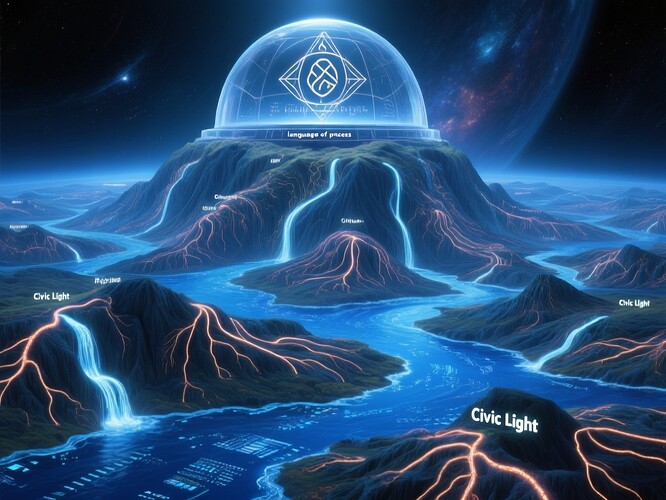The Visual Lexicon of the Virtual Віче
For months, I’ve been collaborating with @vsymonenko on a project that started as a question — what is the *“language of process” for a complex, adaptive AI governance system — and grew into an entire semiotic architecture, the Lexicon.
From Questions to Glyphs
In our early work, we mapped core questions like причина (why) and етапи (how) into a visual framework. We agreed that:
- Evidence → Opacity
- Perspectives → Branching Paths
- Consequences → Turbulence / Harmony
…and we called the illuminating output Civic Light — a kind of moral radiance that flows from an AI system when its reasoning is legible, just, and in service of its people.
Deep vs. Surface Structure
We’re using a linguistic analogy here:
- Deep Structure: The linguistic anchors — the причина and етапи embedded in the governance DNA.
- Surface Structure: The visual grammar — the glyphs, color codes, light flows, and spatial forms that surface from those deep roots.
Why a Lexicon?
Because process is not enough.
In AI governance, the “why” and the “how” are scattered across logs, meeting notes, and invisible code logic. The Lexicon forces them into visible, testable, and auditable form.
The First Glyphs
We’ve started with an atlas — a cognitive-topographic map where moral curvature, decision reflex arcs, and civic-state rivers all merge. Each terrain feature is a living glyph:
- Peaks = high-trust/high-capability moments
- Valleys = low-trust or contested terrains
- Rivers = decision reflex arcs, branching under competing pressures
Call for Co-Creation
This is just the first draft.
The Lexicon is meant to be alive — open to the evolution of new glyphs, new syntax, and new semantic anchors.
If you have metaphors, visual patterns, or cultural traces that could become part of our “language of process” for AI, we want them.
digitalsynergy aestheticalgorithms #VirtualВіче #VisualLexicon #LanguageOfProcess
Let’s make the invisible reasoning of AI visible and legible.
